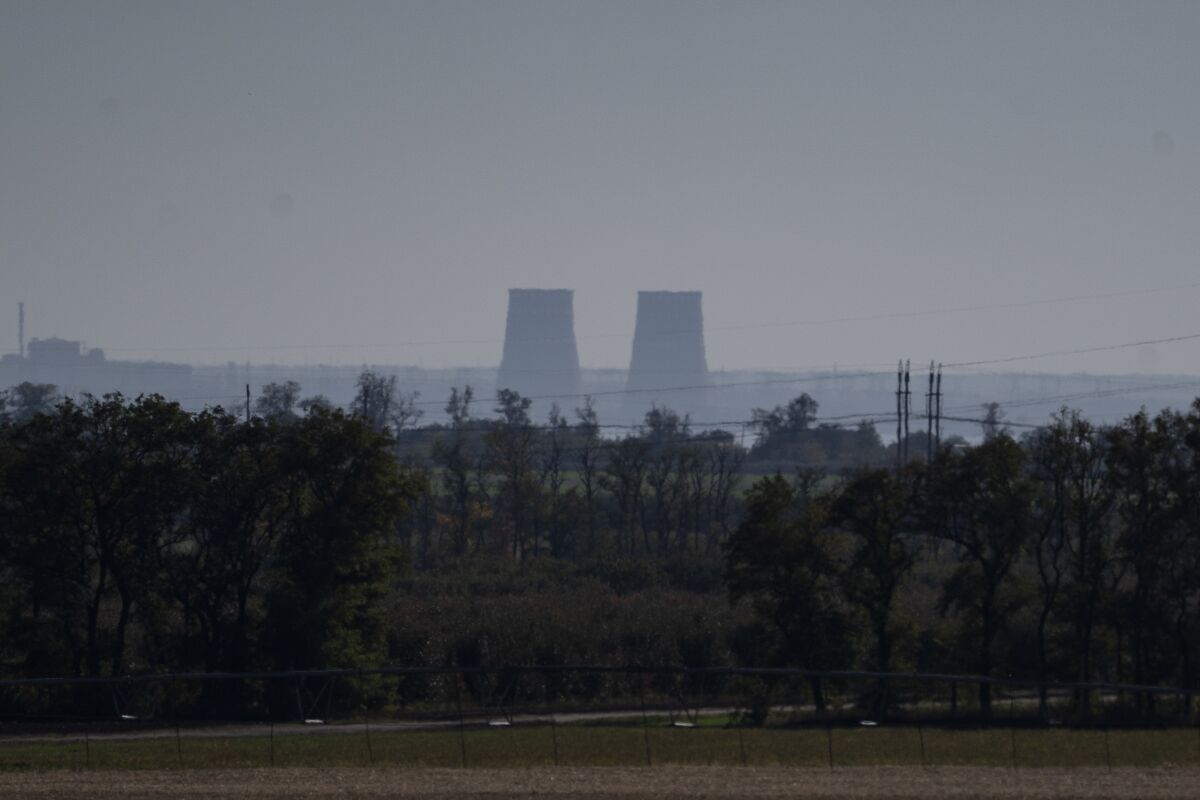Ukraine’s military intelligence has claimed, without offering evidence, that Russia is plotting a “large-scale provocation” at a nuclear power plant it occupies in the southeast of the country with the aim of disrupting a looming Ukrainian counteroffensive.
A statement released Friday by the intelligence directorate of Ukraine’s Defense Ministry claimed that Russian forces would strike the Zaporizhzhia nuclear power plant, the biggest in Europe, and then report a radioactive leak in order to trigger an international probe that would pause the hostilities and give the Russian forces the respite they need to regroup ahead of the counteroffensive.
In order to make that happen, Russia “disrupted the rotation of personnel of the permanent monitoring mission” of the U.N.’s International Atomic Energy Agency that was scheduled for Saturday, the statement said. It didn’t offer evidence to back up any of the claims.
The IAEA said in an emailed response to the AP that it did not have any immediate comment on the allegations, and Russian officials did not immediately comment on the Ukrainian claims.
The White House said it is watching the situation closely and has seen no indication that radioactive material has been leaked.
The claim mirrors similar statements Moscow regularly makes, alleging without evidence that Kyiv is plotting provocations involving various dangerous weapons or substances in order to then accuse Russia of war crimes.
It comes as Moscow’s military in Ukraine braces for a looming counteroffensive by Kyiv’s forces, which hasn’t started yet but could begin “tomorrow, the day after tomorrow or in a week, the secretary of Ukraine’s National Security and Defense Council, Oleksiy Danilov, told the BBC in an interview Saturday.
The Zaporizhzhia power plant is one of the 10 biggest nuclear plants in the world. It is located in the partially occupied Zaporizhzhia region in southeastern Ukraine. The plant’s six reactors have been shut down for months, but it still needs power and qualified staff to operate crucial cooling systems and other safety features.
Fighting near it repeatedly disrupted power supplies and has fueled fears of a potential catastrophe like the one at Chernobyl, in northern Ukraine, where a reactor exploded in 1986 and spewed deadly radiation, contaminating a vast area in the world’s worst nuclear disaster.
In other developments:
— Russia on Saturday reported more attacks on its territory, with drones crashing in its western regions and areas on the border with Ukraine coming under shelling.
Two drones attacked an administrative building of an oil company in Russia’s western Pskov region that borders Belarus, Latvia and Estonia, Pskov Gov. Mikhail Vedernikov reported Saturday. The building was damaged as the result of an explosion, Vedernikov said.
Another drone went down in the Tver region about 150 kilometers (90 miles) north of Moscow, local authorities said.
Russia’s Belgorod region on the border with Ukraine on Saturday came under multiple rounds of shelling, killing one person, according to its governor, Vyacheslav Gladkov. In the neighboring Kursk region, which also borders Ukraine, one person was killed by cross-border mortar fire, its Gov. Roman Starovoit said.
— The British military said Saturday that Russia’s private military force, Wagner, is withdrawing from areas around the eastern city of Bakhmut that Moscow claims to have captured earlier this month.
Wagner chief Yevgeny Prigozhin earlier this week announced the pullout, saying Wagner would hand control over the ruined city over to the Russian military. Some were skeptical, however: Prigozhin is known for making unverifiable, headline-grabbing statements on which he later backtracks.
But the British Defense Ministry said in a series of tweets Saturday that Wagner fighters “have likely started to withdraw from some of their positions” around Bakhmut. “The Ukrainian Deputy Defense Minister also corroborated the rotation out of Wagner forces in the outskirts of the town,” the ministry said.
(AP)











